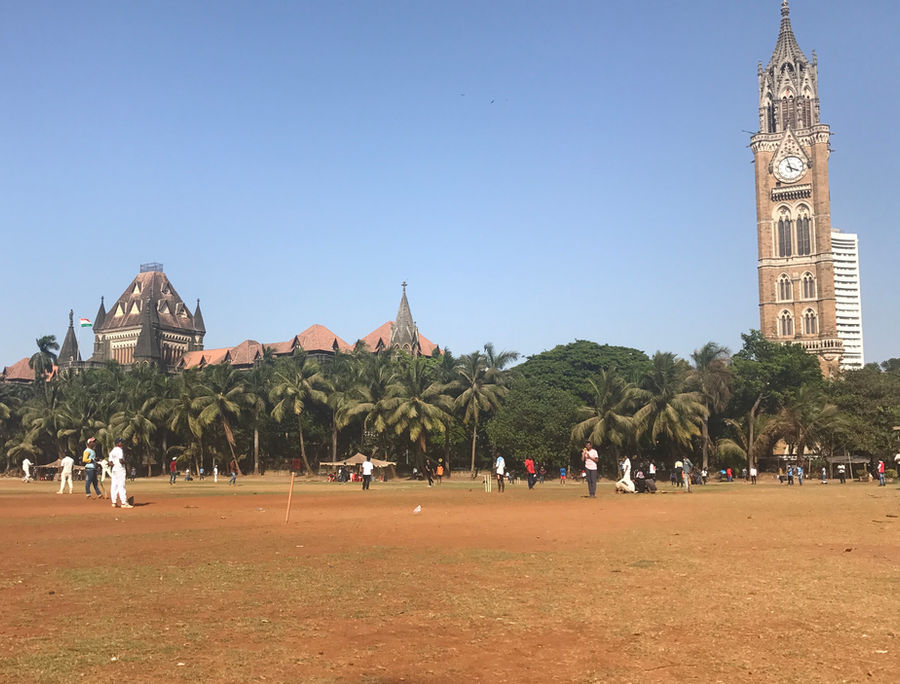Mumbai - The City of Countries
- April Snow Dominguez
- Mar 19, 2017
- 3 min read
Mumbai. 3/16/17

We paid a taxi driver to give us a tour around Mumbai today. We visited the Jain Temple, floating gardens, Malabar Hills, the Dhobi Ghat - a 140 year old and largest outdoor laundry service, the Gandhi home from 1917-1934, the largest slum in Asia, and the Gateway to India - one of the most treasured monuments built in India.


During our tour the most of our conversation was educating us on the various religions in India. We stopped outside a Parsi Temple and a Parsi Tower of Silence. Parsi people believe in one creator God, heaven and hell, good and evil, and individual choice. It's very interesting to research and educate yourself on other religions. So many religions have the same make up. The same foundation. Same beliefs. And different rules to monitor it's population. Parsian is an oppressed religion that is continuing to decrease in size. Parsi people must marry within the religion. And a child who was not birthed by two Parsi parents will not be considered a Parsian. The Tower of Silence is a temple where the Parsi people place their dead for the birds to eat rather than burying the bodies. Parsi's are extremely intelligent people who adopted western education early on, unlike most of India. The female literacy rate for Parsi people is 90% whereas the rest of the country is 57%.

Based off our conversations with our cab driver, Sikh (which is his religion), was a religion than came into India from Pakistan. He explained to us the four unforgivable sins, one of which is to cut your hair (though, he explained to us that 98% of Sikh's will cut their hair - because religion is in their heart). Another is the means by which you kill an animal. The killing of an animal must be done in one strike. He told us that his family left Pakistan before he was born. His mother and father and their parents fled Pakistan because the government did not tolerate non-Muslims. They moved to Mumbai and started from zero. When we first got into the car I made an assumption in my mind that he was Muslim solely because of the turban he wears around his head. Not an assumption with judgement. Simply an assumption based off observation. One that was clearly wrong. I didn't even know that Sikhism and Parsian were religions until today. Actually, I didn't even realize Jainism existed either until today. And we must have been to a dozen Jain temples around Asia already. After I asked about the turban and if multiple religions wear the turban, he began pointing out a Muslim versus a Sikh based on the turbans they wore as men walked down the street. It's incredible how much I don't know. I know so little on the world and other religions. Sikh is actually the fifth largest religion in the world. With over thirty million people practicing Sikhism. And I am just finding out about it's practice.


Mumbai is a city of twenty five million people. It is incredibly crowded here. We took our first local Indian train today to get from our hostel to the main train station, Mumbai CST. This is iconic in India, similar to Grand Central Station in New York City. Here, we tried to book train tickets from Mumbai to Jaiselmur. This journey by train will take us approximately thirty six hours total, by which we will spend two nights sleeping on two trains.

Our cab driver pointed out (though this information isn't exactly correct), that the definition of a country is a group of people that speak the same language, is based on the same religion and culture to occupy a land. By Myriam Webster's definition, that is incorrect. But it is an interesting concept. If you think of Italy, Italians speak Italian. Americans speak English. Chinese speak Chinese. Brazilians speak Portuguese and so on. Though, many countries have several languages (especially Myanmar tribe villages), India blows those rules out of the water. It is a country with nearly 1,700 forms of language and dialects. And a number of religions I have yet to count.

"India has 22 official languages. According to Census of India, the total number of mother tongues spoken in India is 1652. However, only around 150 languages have a sizable speaking population. The Indian census of 1961 recognised 1,652 different languagesin India (including languages not native to the subcontinent)." Quora.com

Nearly every state and many different sections of India have their own languages. Religions vary from neighborhood to neighborhood. There is no common denominator here except that of being an Indian. It's a fascinating concept to think about. The vast differences among Indian people living so closely in so many communities under one country. And I thought New York City was diverse.

-AS @travelinsnow



Comments